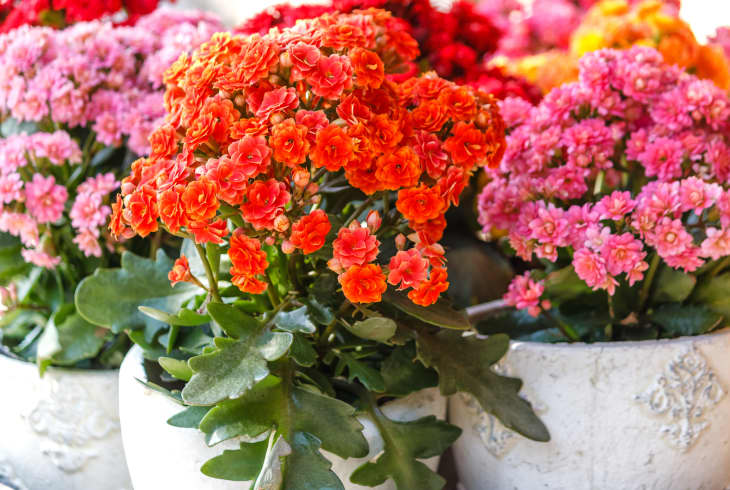There’s no denying that leafy green foliage plants add a calming and homey touch to your decor. Sometimes, though, we want to mix it up with a splash of cheery flowers. Unfortunately, coaxing plants to bloom indoors, where the light is dimmer and the air drier, often requires a more advanced level of green thumbery than many of us possess.
So let us introduce you to kalanchoe, a succulent with vibrant, long-lasting flowers that’s as easy to care for as it is to look at. It’s a hardy succulent that grows to be about a foot tall with beautiful deep green, scalloped leaves, and clusters of tiny star-shaped flowers in bright pink, yellow, orange, red, or white. You can commonly find it in garden centers, so it shouldn’t be difficult to get your hands on one.
Kalanchoe Care
Kalanchoe is a survivor, so you shouldn’t have much trouble keeping it alive, but there are a few key things you need to know to keep your plant healthy. Follow these tips and it will bloom every winter and spring for many seasons to come!
Planting
For best results, plant your kalanchoe in a pot with drainage holes (this can be a plastic liner inside a decorative ceramic pot). Choose a potting soil designed for houseplants that includes 50-60% peat moss and about 40% perlite.
Sun
Too much sun can damage kalanchoe, so be careful about the location you choose for your pot. Direct light from a south-facing window can burn the tips of the leaves, so go with partial sun to dappled shade. It should have no more than two hours of direct sunlight each day.
Water
Water your plant thoroughly about once a week. Poke your finger two inches into the soil to test for dampness; the soil should be completely dry before watering again.
Pinching Back
Prevent kalanchoe from becoming “leggy” by pinching off tall shoots and spent flower stems. This will promote new growth and flowers while keeping the plant compact and healthy-looking.
Forcing Blooms
Kalanchoe naturally blooms during the winter and early spring when the days are short, but you can force the plant to bloom again throughout the year by tricking it into thinking winter has arrived. To do this it needs darkness for at least 12-14 hours per day for about six weeks. Move it into a closet for this period, bringing it out only for the morning sun. Once new buds appear, you can return to keeping the plant in its usual spot by the window.

Hải Yến
Gió bạn với cây tự buổi nào ,
Gió về cây lại ngất ngư chao .
Gió đi cây sẽ im lìm đứng,
Như kẻ lỡ làng dạ khát khao .
Hải Yến
Gió bạn với cây tự buổi nào , Gió về cây lại ngất ngư chao . Gió đi cây sẽ im lìm đứng, Như kẻ lỡ làng dạ khát khao .



